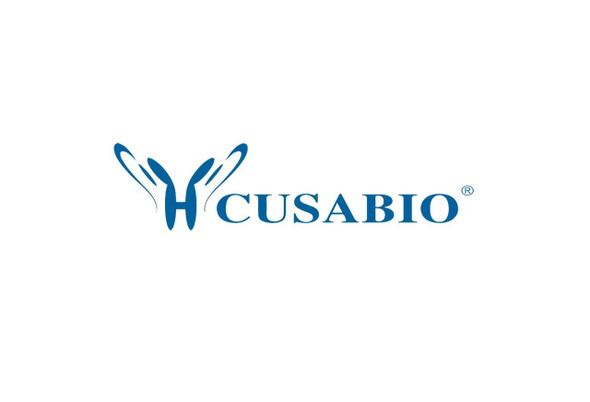Cusabio Human Recombinants
Recombinant Human Prostate stem cell antigen (PSCA), partial | CSB-EP018840HU1
- SKU:
- CSB-EP018840HU1
- Availability:
- 3 - 7 Working Days
Description
Recombinant Human Prostate stem cell antigen (PSCA), partial | CSB-EP018840HU1 | Cusabio
Alternative Name(s): PSCA; UNQ206/PRO232; Prostate stem cell antigen
Gene Names: PSCA
Research Areas: Others
Organism: Homo sapiens (Human)
AA Sequence: LCYSCKAQVSNEDCLQVENCTQLGEQCWTARIRAVGLLTVISKGCSLNCVDDSQDYYVGKKNITCCDTDLCNAS
Source: E.coli
Tag Info: N-terminal 6xHis-tagged and C-terminal 6xHis-tagged
Expression Region: 13-86aa
Sequence Info: Partial
MW: 13.4 kDa
Purity: Greater than 90% as determined by SDS-PAGE.
Relevance: May be involved in the regulation of cell proliferation. Has a cell-proliferation inhibition activity in vitro.
Reference: Genetic variation in PSCA is associated with susceptibility to diffuse-type gastric cancer.The study group of millennium genome project for cancerSakamoto H., Yoshimura K., Saeki N., Katai H., Shimoda T., Matsuno Y., Saito D., Sugimura H., Tanioka F., Kato S., Matsukura N., Matsuda N., Nakamura T., Hyodo I., Nishina T., Yasui W., Hirose H., Hayashi M. , Toshiro E., Ohnami S., Sekine A., Sato Y., Totsuka H., Ando M., Takemura R., Takahashi Y., Ohdaira M., Aoki K., Honmyo I., Chiku S., Aoyagi K., Sasaki H., Ohnami S., Yanagihara K., Yoon K.-A., Kook M.-C., Lee Y.-S., Park S.R., Kim C.G., Choi I.J., Yoshida T., Nakamura Y., Hirohashi S.Nat. Genet. 40:730-740(2008)
Storage: The shelf life is related to many factors, storage state, buffer ingredients, storage temperature and the stability of the protein itself. Generally, the shelf life of liquid form is 6 months at -20?/-80?. The shelf life of lyophilized form is 12 months at -20?/-80?.
Notes: Repeated freezing and thawing is not recommended. Store working aliquots at 4? for up to one week.
Function: May be involved in the regulation of cell proliferation. Has a cell-proliferation inhibition activity in vitro.
Involvement in disease:
Subcellular Location: Cell membrane, Lipid-anchor, GPI-anchor
Protein Families:
Tissue Specificity: Highly expressed in prostate (basal, secretory and neuroendocrine epithelium cells). Also found in bladder (transitional epithelium), placenta (trophoblasts), stomach (neuroendocrine cells), colon (neuroendocrine cells) and kidney (collecting ducts). Overexpressed in prostate cancers and expression is correlated with tumor stage, grade and androgen-independence. Highly expressed in prostate cancer bone metastases. Expressed in gastric epithelial cells, mainly in the isthmus (at protein level). Not detected in normal intestinal epithelium (at protein level). Expressed in brain cortex; expression is significantly increased in the front cortex of Alzheimer disease patients.
Paythway:
Form: Liquid or Lyophilized powder
Buffer: If the delivery form is liquid, the default storage buffer is Tris/PBS-based buffer, 5%-50% glycerol. If the delivery form is lyophilized powder, the buffer before lyophilization is Tris/PBS-based buffer, 6% Trehalose, pH 8.0.
Reconstitution: We recommend that this vial be briefly centrifuged prior to opening to bring the contents to the bottom. Please reconstitute protein in deionized sterile water to a concentration of 0.1-1.0 mg/mL.We recommend to add 5-50% of glycerol (final concentration) and aliquot for long-term storage at -20?/-80?. Our default final concentration of glycerol is 50%. Customers could use it as reference.
Uniprot ID: O43653
HGNC Database Link: HGNC
UniGene Database Link: UniGene
KEGG Database Link: N/A
STRING Database Link: STRING
OMIM Database Link: OMIM









